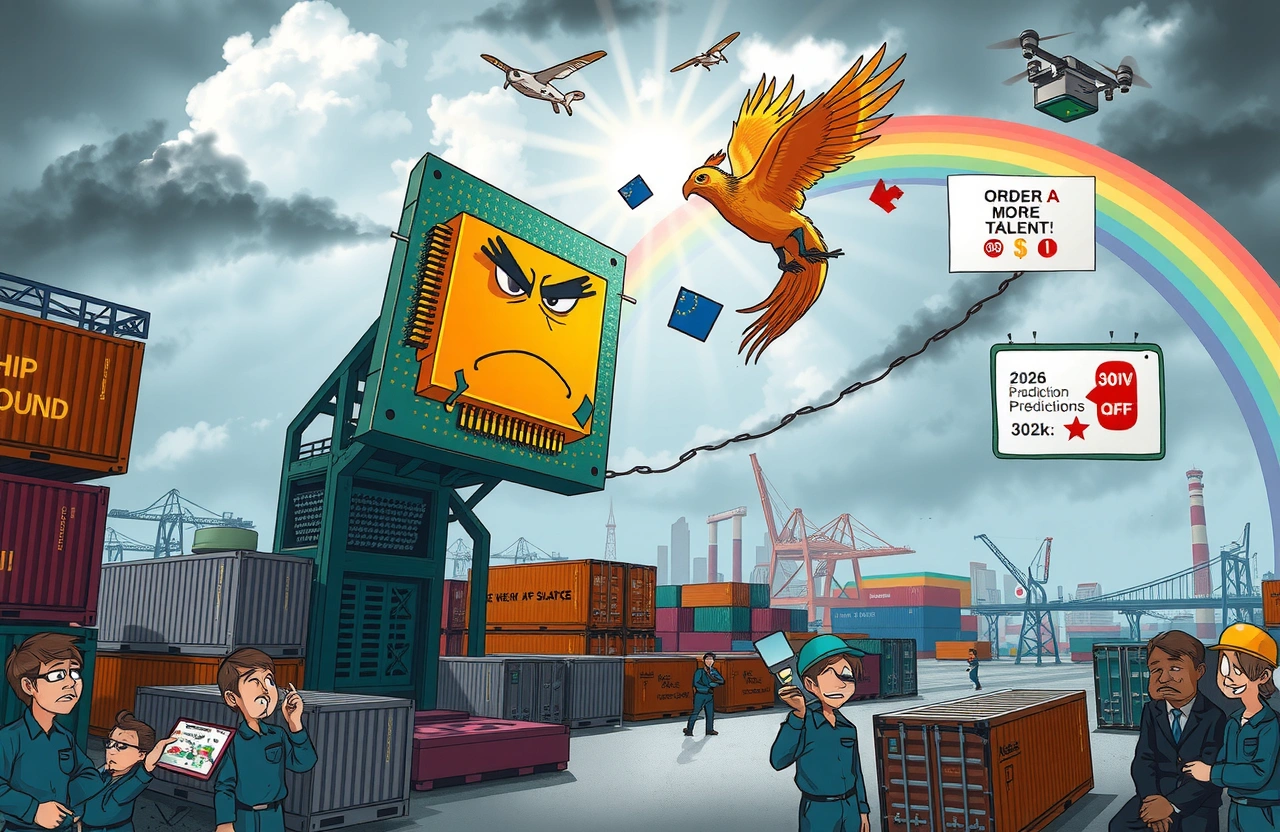An Industry Under Siege
Assembly lines across Guangdong and Jiangsu provinces stand eerily quiet as factory managers refresh component tracking dashboards. The relentless global chip shortage, now entering its fourth year, continues to throttle China’s manufacturing engine. Amid geopolitical tensions and supply chain fractures, an estimated 72% of Chinese electronics producers report production delays – a sharp increase from 45% in 2022. Port backups in Shanghai and Shenzhen compound the crisis, with microchip shipments delayed by an average of 18 weeks. Industry analysts warn this unprecedented semiconductor drought shows no signs of ending before 2026, forcing painful operational overhauls across China’s industrial landscape. Manufacturing output declined 3.8% year-over-year last quarter according to National Bureau of Statistics data, marking the steepest drop since the pandemic’s peak.
The Anatomy of the Crisis
The current chip shortage stems from a perfect storm of demand surges, production bottlenecks, and geopolitical fractures. Understanding these converging factors reveals why resolution remains distant.
Demand Outpacing Foundry Capacity
Even as new chip factories break ground, increasing consumer and industrial demand continues to outstrip production growth.
– Smart devices require 37% more semiconductors than 2019 models
– Electric vehicle production grew 89% last year
– 5G infrastructure demands quadruple legacy requirements
Geopolitical Flashpoints
Trade restrictions have severely limited Chinese manufacturers’ access to cutting-edge components.
– U.S. export controls prevent sales of advanced AI chips
– Japan and Netherlands joined semiconductor technology embargoes
– Domestic SMIC foundries only meet 23% of national requirements according to Semiconductor Industry Association reports (source: https://www.semiconductors.org)
Pain Points Across Industries
Consumer Electronics Squeeze
Major smartphone and appliance manufacturers face unprecedented challenges.
– Xiaomi revised Q4 shipments downward by 15 million units
– Home appliance makers substituting components causing 23% defect rate increase
– Average product development cycle extended from 9 to 14 months
The Car Manufacturing Crisis
Automakers experience the most visible impacts, with assembly lines stalling nationwide.
– BYD temporarily closed 3 production facilities last quarter
– EV battery management system parts delayed average 26 weeks
– Secondary market chip prices increased 300-700% for automotive controllers
Strategic Countermeasures
Manufacturers deploy innovative responses to this prolonged chip shortage.
Supply Chain Reinvention
Leading companies are fundamentally rethinking procurement approaches.
– Developing multi-tier supplier ecosystems
– Implementation of AI-powered inventory buffers
– Nearshoring partnerships with Southeast Asian suppliers
Technological Adaptation
Product redesigns and component substitutions become survival tactics.
– Simplified circuit architectures requiring fewer chips
– Utilizing legacy node semiconductors creatively
– Open-source RISC-V chip adoption surged 78% annually
Government Interventions and Industry Response
$143 billion in semiconductor subsidies poured into domestic production since 2021, yet tangible results lag behind schedule.
– SMIC’s 7nm yield remains below 35% efficiency
– Yangtze Memory delays mass production until mid-2025
– Talent gap: 320,000 unfilled semiconductor engineering positions
When Will Relief Arrive?
Industry consensus suggests the chip shortage will persist through 2025 at minimum.
Realistic Timeline Projections
Current indicators point to gradual rather than sudden recovery.
– Fab construction timelines average 3-5 years
– Equipment lead times remain over 12 months
– 200mm wafer production still dominates legacy systems
The New Supply Chain Reality
Most manufacturers acknowledge this crisis necessitates permanent operational changes.
– Increased focus on component recycling
– Vertical integration becoming strategic imperative
– Inventory buffer stocks now standard practice
Navigating the Long Haul
As production delays mount, China’s manufacturers display remarkable resiliency through this extended crisis. Automotive leaders like Geely accelerate federated learning systems to predict chip allocations 18 months ahead, while drone manufacturer DJI pioneers chip-agnostic circuit designs. The shared pain has sparked unprecedented industry collaboration: over 200 firms now participate in component sharing pools through the China Electronics Manufacturing Consortium. Though lean manufacturing principles still guide operations, companies increasingly prioritize supply chain redundancy over efficiency. With quarterly financials showing R&D investments shifting toward semiconductor independence, a fundamental transformation is underway. As this persistent chip shortage reshapes industrial strategies, proactive adaptation remains non-negotiable – manufacturers must explore component diversification immediately and strengthen partnerships across the electronics ecosystem.



